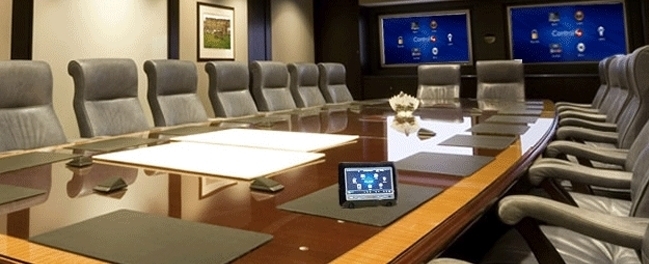
How is an efficient meeting held? There are tens of researches, hundreds of articles and expert opinions for answering this question. In fact, the goal of all this research is to find an answer to the question of how to minimize the loss of time and labor while achieving the expected result from a meeting. In most of this research and articles, you can find very detailed analyses until suggestions for topics such as architectural design, color selection, furniture and seat selection have their effects on human psychology. However, due to the comfort of the participants, which is the main element of the meeting, the lighting and air conditioning systems that directly affect the meeting and the efficiency of the meeting are either not mentioned at all or are referred to in slurred sentences. How efficient can a meeting in an extremely hot or cold room be when the participants wish the meeting to end and they leave the room as soon as possible? Or how much of what was said in the meeting will a person who has resisted not to snooze in a room with a low oxygen ratio who does not breathe fresh air remember? So, will someone who has difficulty in choosing the facial features of the other person due to the insufficient lighting focus on the meeting or the person sitting opposite him/her? Or under the stress of excessively bright lighting, who would want to make a presentation or a speech?
The design of automation systems that will control these systems is as important as the systems that will provide comfort in the meeting rooms. We can evaluate the automation systems to be applied in the meeting room under a few headings.
As in all other spaces, the meeting rooms should have sufficient oxygen and the right temperature. The amount of oxygen and heat load of the ambient will vary depending on the number of participants. The automation system to be applied is also expected to be equipped to detect and control such changes. Ideal perception is the perception to be made from the ambient, that is, from inside the meeting room. For this purpose, it will be necessary to use one or multiple temperature and air quality sensors depending on the size of the ambient. If there is a need and/or possibility to control the ambient humidity, the same humidity sensor should be used. If it is not possible to use sensors in the ambient due to aesthetic concerns, sensors can be placed on the suction duct. Wireless sensor options can be considered for retrofit applications.
It is basically used for two purposes: To provide sufficient and homogeneous lighting in the ambient. To operate different lighting fixtures in circumstances such as speech, presentation, breaks, etc. Especially in the meeting rooms with daylight, the contrast between the bright window front and the darker wall side should be prevented. For this purpose, it will be necessary to use light level sensors in at least two points and to apply external control in the lighting fixture. Also, it will be a good solution to prevent the intense daylight coming from the external environment with motorized blinds. If the lighting design is appropriate, the scenarios where different lighting will be operated for different situations such as presentation, speech, breaks, etc. should be performed by lighting automation.
Automation applications are also available for the systems such as presentation screens, projections, monitors, public address and video conferencing. The purpose of the automation to be applied to these systems shall be to operate and stop the relevant system when needed and to ensure the access and control of the participants to these systems. There must be one or more fixed or portable control devices for the equipment management. The control devices may be system-specific devices or software installed on smart devices. A sufficient number of DVI, HDMI, USB, Ethernet, WiFi and similar connection ports must be easily accessible for the participants to use the meeting equipment.
Especially for the meeting rooms open to the common use of more than one department, the management of room occupations is required. The meeting rooms are the systems that inform the users with the panels located inside and outside the room, where the usage requests are created, and the availability is questioned. For the effective use of the meeting management systems, they should be integrated with the software such as CRM, ERP or Exchange where requests will be created. It is also a very functional and good practice to play corporate videos on projections or monitors between the meetings.
All these automation applications can, of course, be made individually. However, it is correct to operate all the automation systems to be applied under a single roof. The person who manages the meeting should be able to control all systems in the meeting room with the control unit.